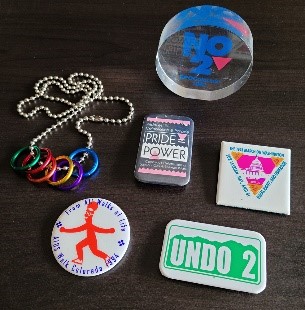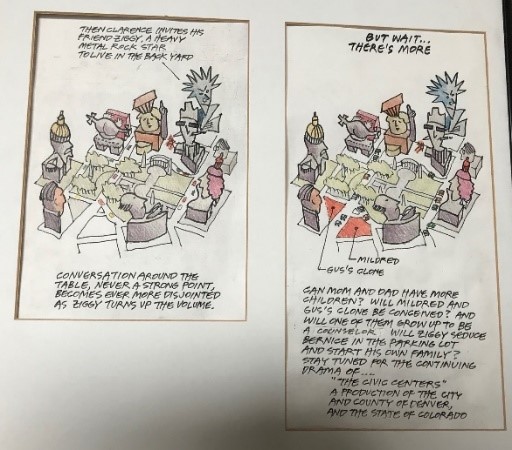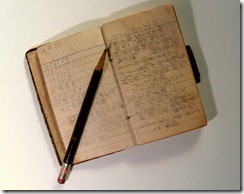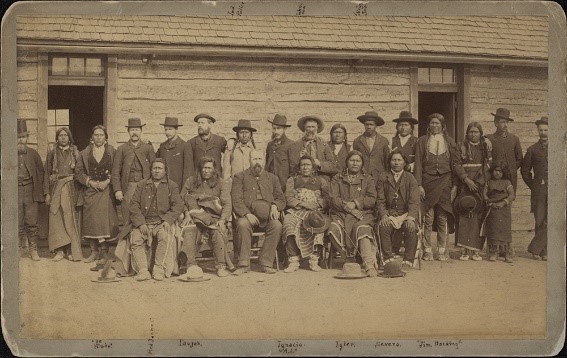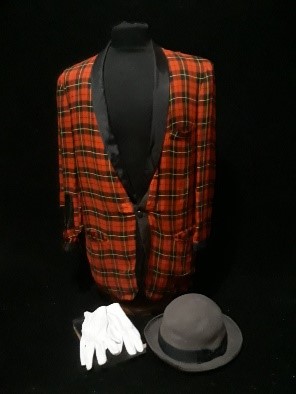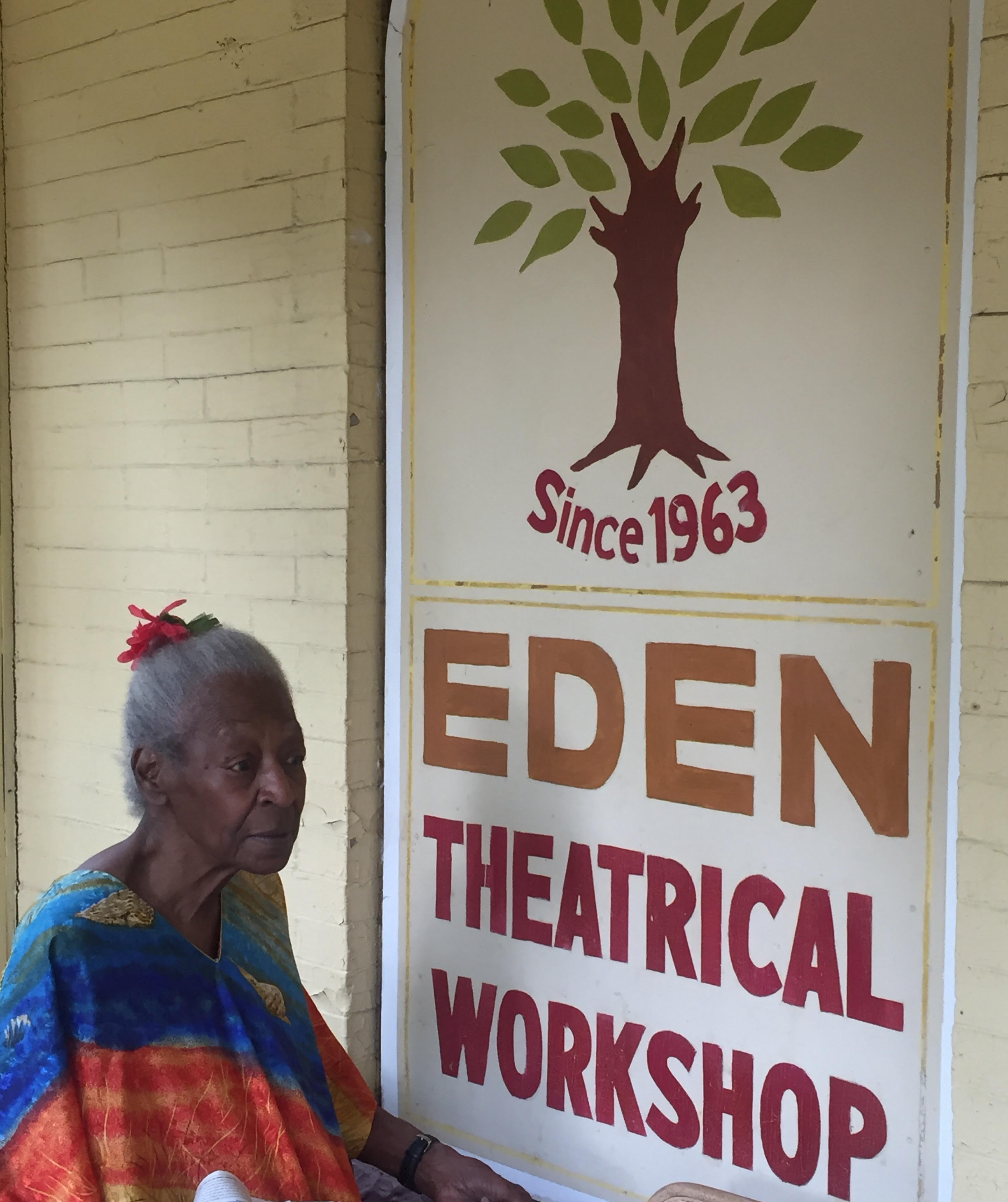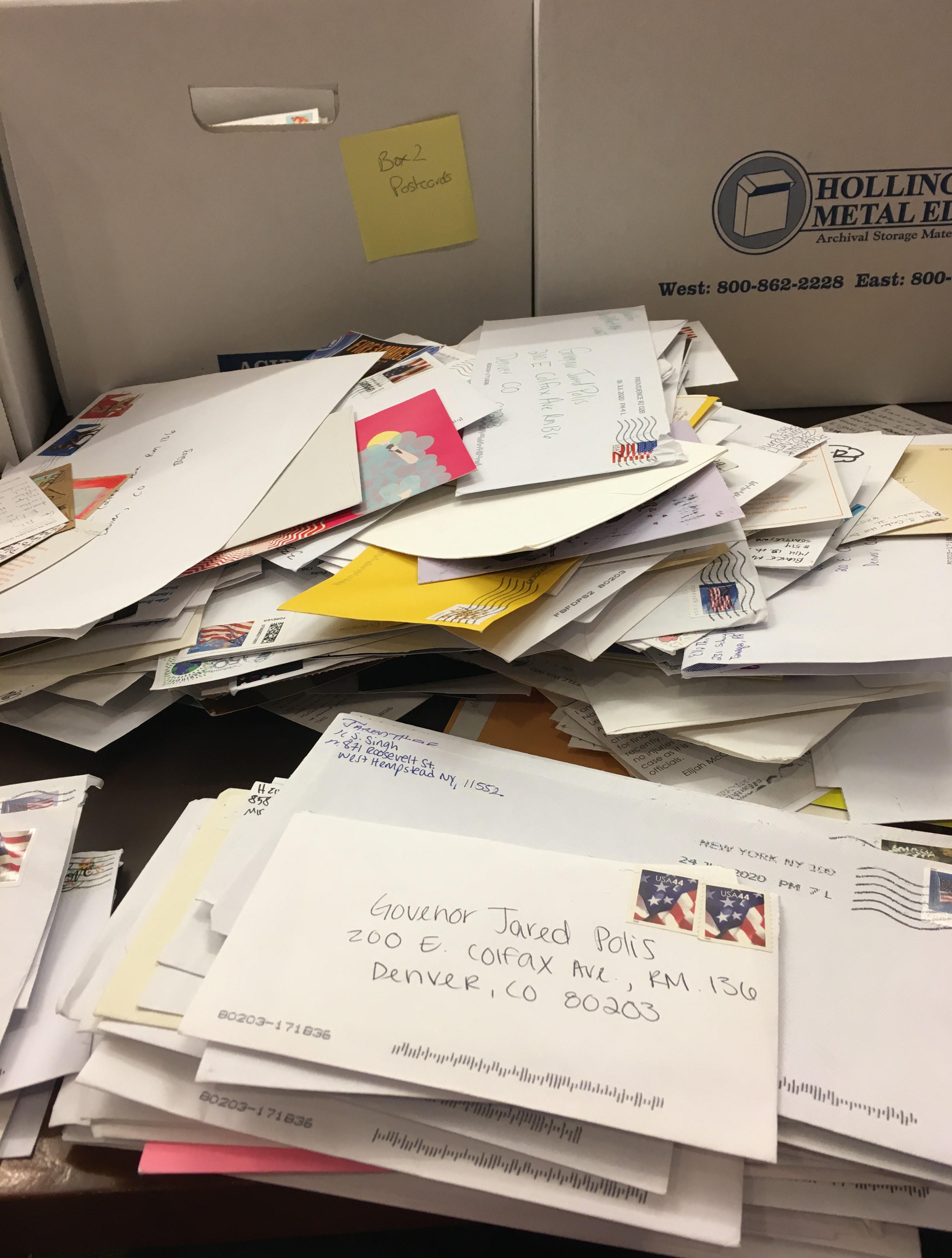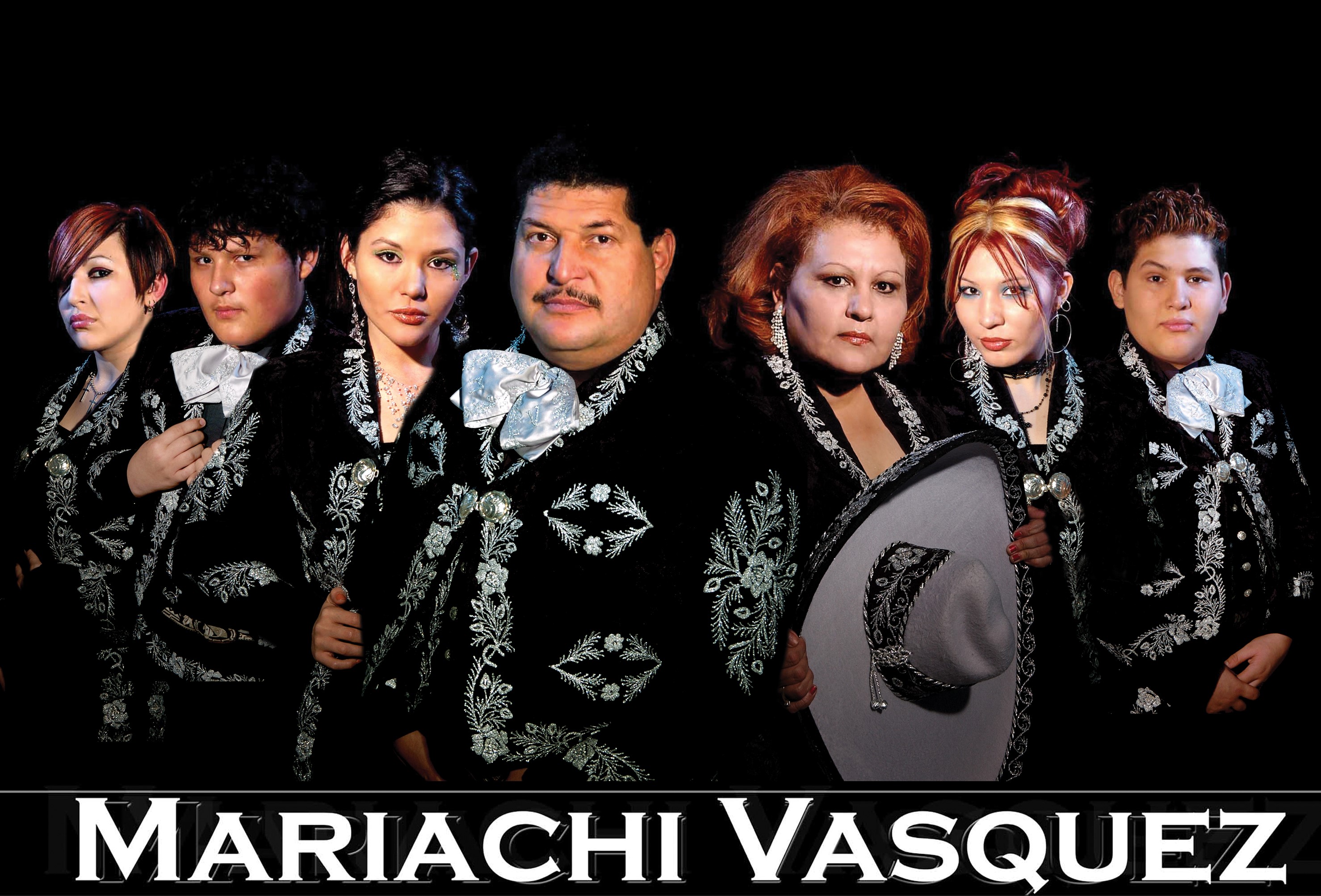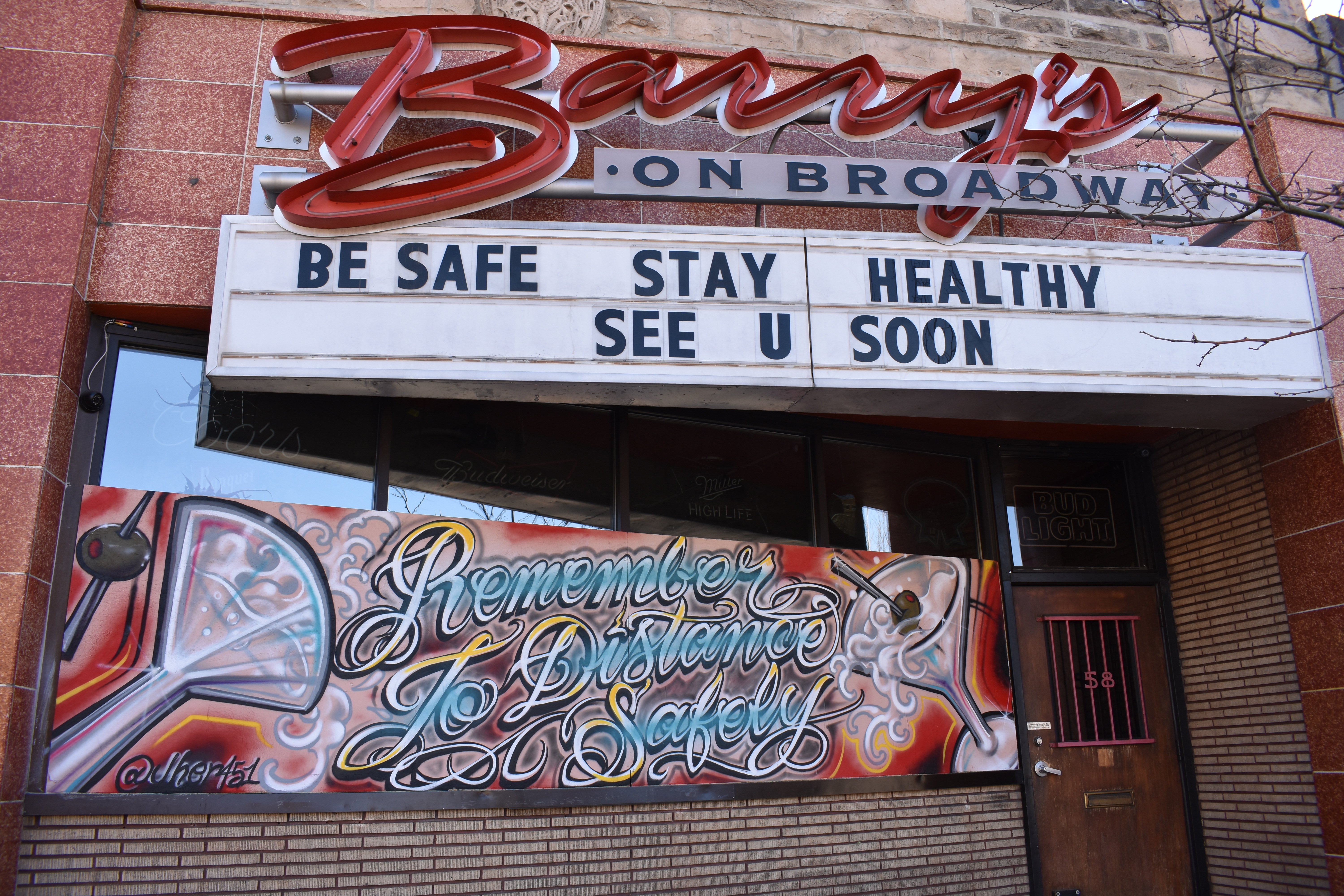
Story
Nine of Our Favorite New Additions to the Collection
Amid a global pandemic, economic struggles, protests for racial justice, unprecedented wildfires, and political burnout, History Colorado collected through it all. Here are some of our favorite acquisitions from 2020.
From Ancestral Puebloan pottery to a vaquero's saddle to elegant wedding dresses worn by generations of brides, History Colorado has been documenting and preserving the stories of people who have called this place home for 142 years. Each year, we continue to add new items to the museum's permanent collection, ensuring that future generations will have the artifacts they need to make sense of their shared past. Last year was one of the most tumultuous in memory, but neither pandemic, protests, or polarized politics could stop our curators—in fact, we documented the events of 2020 (and now 2021) even as we continued to add unique, insightful, and revealing items from across Colorado's history to our collection. Below are nine of our curators' favorite acquisitions from 2020.
It's not easy to add artifacts to the History Colorado collection. While we are always collecting, we are necessarily selective about what we accession (the museum term for adding an item to the collection). We simply do not have the resources or the space to collect every single item connected to the events, people, and places of Colorado’s past (the storage facility depicted in that final scene of Raiders of the Lost Ark is more Hollywood than reality), so we ask ourselves a set of questions to help make these decisions:
- What stories can we tell with these items?
- Do the artifacts represent the diversity of our communities and Colorado identities?
- Do they reflect the diversity of our state geographically?
- Can we provide adequate storage, resources, and preservation for the items?
- Are we collecting contemporary materials as well as filling gaps in historic materials?
As we work with donors and community members, these are some of the guiding questions that help us to build a healthy and cohesive collection for Colorado. In a typical year, we accept 150 to 200 collections, each of which could consist of one item or 200 boxes of items. Last year, our acquisitions represented 49 of the state’s 64 counties, and 87 percent of our acquisitions dated to 1935 or after, representing our focus on documenting more contemporary events.
Still, there are favorites. Particularly illuminating documents, photographs that open windows to the past we may not have looked through before, artifacts that perfectly capture a moment in time. Below are some of our favorite additions to the collection in 2020. They reflect diverse voices and lives lived by generations of those who have called Colorado home. They help us see where we’ve been as Coloradans, size up where we are, and consider where we want to go from here.
The Campaign to Repeal Amendment 2
This collection contains a variety of items that document the LGBTQ+ community during a seminal moment. Amendment 2, approved by Colorado voters in 1992, was a landmark initiative that prohibited protections for people based on their sexual orientation. Supported by the religious conservative organization Focus on the Family, Amendment 2 amended the state constitution to prevent any city, town, or county from taking legislative, executive, or judicial action to recognize homosexuals or bisexuals as a protected class. A slim margin of 53 percent of voters approved the amendment. In response to the passage of the amendment, many organizations formed to overturn it, including The Gay and Lesbian Fund, the Gill Foundation, EPOColorado (Equal Protection Campaign), and CLIP (Colorado Legal Initiatives Project). This collection contains many items from EPOColorado and CLIP, such as photographs, invitations to fundraisers, “No On 2” buttons and paraphernalia, and organizational documents that detail the efforts of the repeal campaign. (ID 2021.5)
Downtown Denver’s Transformation
Urban designer Richard C. Farley created this cartoon for a Denver conference on the Civic Center in the 2000s. Farley served as the Deputy Director and Head of Urban Design for the City and County of Denver’s Planning and Development Office from 1987 to 1996, after which he worked at the Denver-based design studio Civitas, Inc. from 1996 to 2010. The cartoon traces the history of the architectural transformation of the significant cultural institutions around Civic Center in the Golden Triangle neighborhood. The buildings personified include the Colorado State Capitol, the City and County Building, the Denver Central Library, the Denver Art Museum, the Judicial Building, and the old History Colorado building, among others. (ID: 2020.35)
An American Citizen in the Japanese Army During World War II
This small, handwritten journal documents Michio Taniwaki’s 1947 recollections of his service in the Japanese Army during 1945. Michio “Mitch” Taniwaki was born in the United States, but moved with his family to Japan during the 1930s for better economic opportunities on their family farm. He was drafted during World War II while doing his best to hide his American citizenship from his fellow soldiers. Most notably, he was stationed in Hiroshima when the atomic bomb was dropped on that city in August 1945. (ID: 2020.65)
Black Life in the Nineteenth Century
The Steve Turner Collection includes several photographs relating to Black culture and heritage in Colorado from the late-nineteenth century through the early-twentieth century. Included in this acquisition is a cabinet card showing John Taylor, an African American Civil War veteran and interpreter for the US Cavalry in Colorado. Born enslaved in Kentucky in 1841, he eventually ran away to enlist in the first Black regiment recruited by Union Army officials. After being honorably discharged in 1866, Taylor re-enlisted in 1867 and was sent with the famed Buffalo Soldiers to fight American Indians in Colorado, New Mexico, and Arizona. By 1870, he mustered out of service and lived with the Apache Tribe and then the Utes, marrying Kitty Cloud of the Ute Tribe. Taylor also became the first trapper-settler in the Valley of the Pine, homesteaded in Ignacio, Colorado, and continued work as an interpreter with the Ute Tribe. The image depicted here shows Taylor in the back row, posing with the Los Pinos Agency in 1882; Chiefs Ignacio and Severo, leaders of the Weeminuche and Caputa bands of the Utes, are seen sitting in the front row. (ID: 2020.73)
Blinky the Clown and the Early Television Industry
Born in Oklahoma, Russell Scott inherited his love of the circus from his father and began his entertainment career as Sears-O the Clown, performing in Colorado Springs, Colorado. Changing his character's name to Blinky, he began Blinky's Fun Club in 1958, originating from the KKTV studios in Colorado Springs. In 1966, the show moved to KWGN in Denver and remained there until ending its run in 1998. Over four decades on television, Scott performed in more than 10,000 episodes and laid claim to the longest career of any children's TV personality in US history. (ID: R.34.2020)
Resisting Racism at the EDEN Theatrical Workshop
Lucy Margarett Walker was born in Memphis, Tennessee, in 1927. She moved to Denver at the age of eleven, attending Cole Junior High and Manual High in east Denver before graduating from Wilberforce School (now University) with a teaching degree. Despite her lifelong desire to be a teacher, discriminatory hiring policies in the Denver Public School district denied her the opportunity to stand in front of her own classroom. She worked in several different positions from the mid-1940s to the mid-1960s: as a substitute teacher, a typist in a federal office, and as the first Black sales clerk at Sears (which was the result of her participation in boycotts against Denver Dry and other area department stores that would not hire Black sales staff). In 1963, Walker founded the EDEN Theatrical Workshop (a contraction of “East Denver”) to offer Black Denverites the opportunity to engage in the theater arts. Walker produced EDEN’s final stage show in 2003. In an oral history, Lucy Walker recounted her story and how she built a vibrant arts organization that spanned four decades, ensuring anyone who wished to participate had a role on or off the stage. (ID: 2020.50)
The Elijah McClain Papers
This collection of correspondence includes postcards and letters sent to Governor Polis, mostly during June and July of 2020, relating to the death of Elijah McClain, an innocent Black man who died while in police custody in Aurora, Colorado. The letters and postcards reflect a national response to police actions and were related to the Black Lives Matter protests for racial justice in Denver and Aurora during the summer of 2020. (ID: MSS.3137)
The Groundbreaking Sound of Mariachi Vásquez
This collection includes a Mariachi Vásquez suit worn by Raúl Vásquez Jr., born in Ajo, Arizona. After graduating from high school, Raúl had the opportunity to perform at the inauguration of President Richard Nixon in Washington, DC, as well as local performances in many states in the Southwest. Raúl married Sylvia Garcia (Vásquez), who was born in Marana, Arizona. She came from a family of migrant workers who were very active in standing up for the rights of immigrant and Chicano field workers, even participating in protests led by Cesar Chavez. The Mariachi Vásquez unique seven-member family group grew to become one of Colorado’s most beloved mariachi bands. They have entertained audiences throughout the state and the Southwest region for the past 33 years, moving their home base from from Arizona to Colorado in 1994. As they branded their name with their own style and creativity, they showcased their ability to perform folkloric mariachi music and English language songs. From their beginning performances strolling along Boulder’s Pearl Street and Denver’s 16th Street Malls, to performing the national anthem for the Denver Nuggets at the Pepsi Center—as well as many appearances on national television, and countless celebrations and concerts—they have truly left their colorful and unique mark on the state and the perception of mariachi music in Colorado. (ID: 2020.47)
Colorado’s Covid-19 Experience
Within weeks of the pandemic making itself felt in Colorado, History Colorado launched the Covid-19 collecting project on March 25, 2020 to begin documenting Coloradans' stories about the novel coronavirus and its effect on their lives. Documenting history in the making in real time as the novel coronavirus spread ensured that we were able to preserve diverse stories of those living through the pandemic as it happened. The effort collected surveys, journals, audio recordings, photographs, videos, and other artifacts related to the pandemic from Coloradans of all ages across the state (ID: 2020.31)
At History Colorado, our collection is Colorado’s collection, held in trust for the people. The collection is reflective of Colorado and relevant to our communities—allowing us to connect and collaborate with people authentically and in multiple voices and perspectives. In 2020, amid a global pandemic, economic struggles, protests for racial justice, unprecedented wildfire disasters, and political burnout, History Colorado collected through it all.
More from The Colorado Magazine
Bringing Back Blinky Museum Collecting in the Time of COVID-19
Me Ha Afectado Mucho Documenting the Covid-19 pandemic among the Latino immigrant community of the Roaring Fork Valley.
Trinidad’s Temple Aaron Looks to the Past to Secure Its Future In the spirit of renewal and perseverance, the people of southern Colorado and northern New Mexico have joined together to ensure a future for Trinidad’s Temple Aaron.

